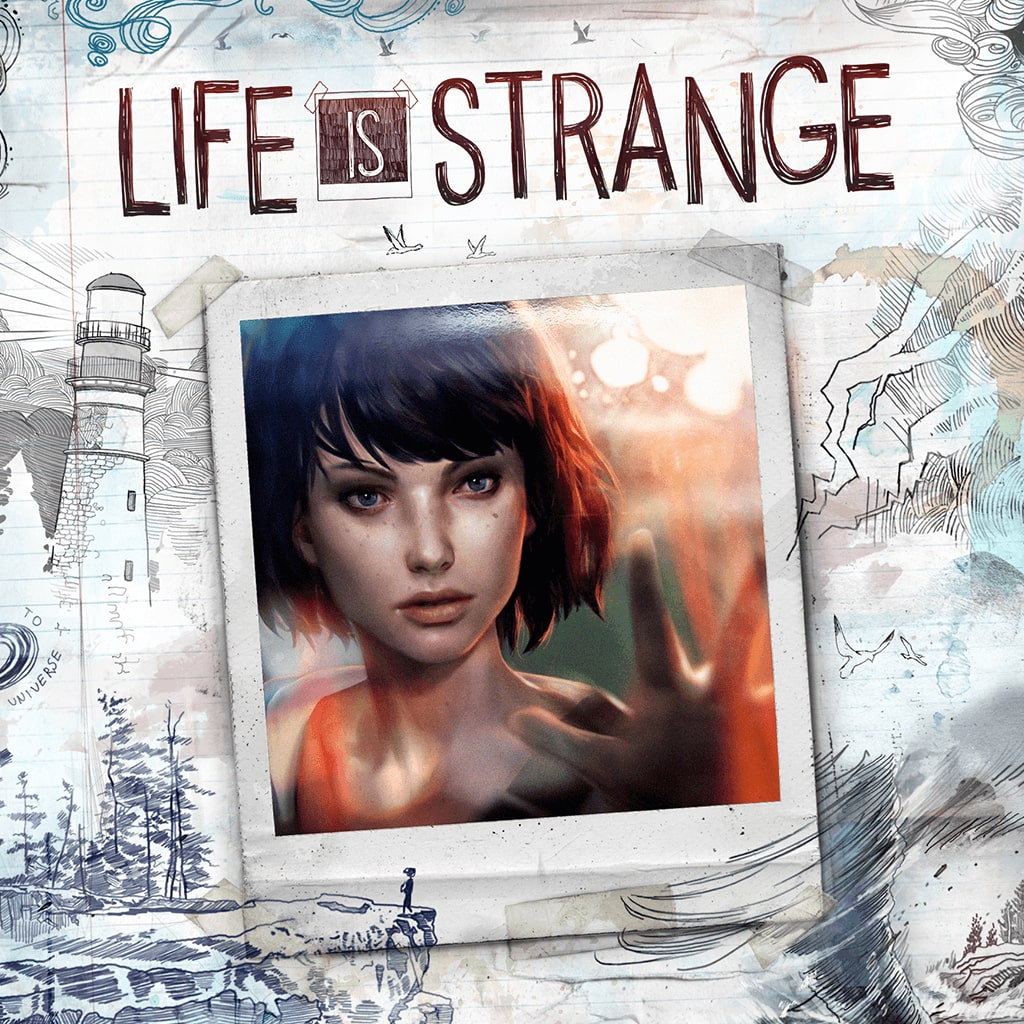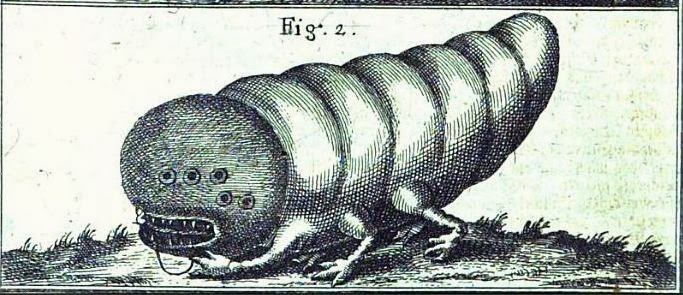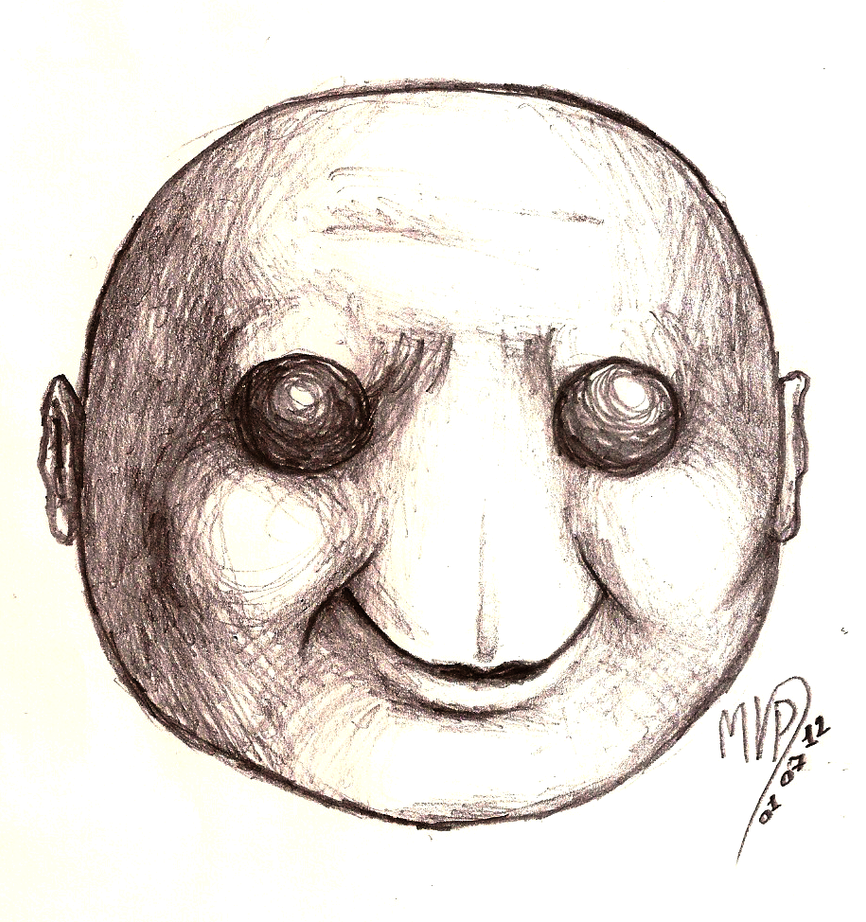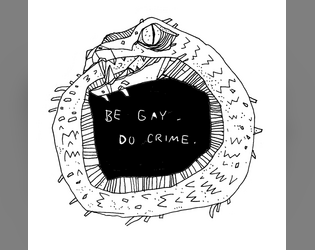"The secrets of PHILOSOPHY and THOUGHT..." - Patrick Stuart referencing a conversation with me. A blog about Tabletop RPGs and other Weirdness.
My Games
Tuesday, March 1, 2022
Royal Tenenbaums meets Children of the Atom: Help me make a storygame!
Thursday, February 24, 2022
MRD2 Introduction and Campaign Setup Proof of Concept
INTRODUCTIONIn the very near future, a paradigm shift of new technological advancements has come about nigh-miraculously by a handful of Corporations. These advancements include austere space colonies and giant robots known as Golem, piloted by special agents of the Corporations— the Nazarites.Nazarite Contracts and consumption of The Wyrm Shamir Symbionts bind Nazarites to their Corporation. In addition to piloting Golem, Nazarites gain supernatural powers, not the least of which is Gilgul, the ability to transmigrate to and from the material world.The Cosmic Ocean Tehom, an ethereal (meta)physical space, presses against the brane of the material world. Alien beings known as The Cyblessed have secretly recruited the Corporations of Earth, using them as proxies to enact Tikkun Olam, The Mending of the World. Or so it would seem, though one may question the veracity of empowering Corporations to solve the world’s problems.The work of the Nazarites includes protecting Earth and the space colonies from the mysterious invaders known as the Amelikites, exploring Tehom and carrying out tasks assigned by the Corporations or their masters The Cyblessed, fighting Kaiju and Dybbuk, putting out fires (literally and figuratively), and whatever else yields profit for the Corporations.Each Nazarite has their own reasons for taking their Nazarite Vows. Wealth and power, privilege; a steady paycheck, security; a noble cause. Regardless, this is not a game about resistance, but about recognizing one's privilege and complicity in a broken system and coming to terms with it, or the enormity of defying it if one deems they must.But remember, your true goal is still Tikkun Olam; to mend the world. Enjoy the benefits of your Corporate position, you deserve it, but don’t get too caught up in the comfort and convenience, or else your Nazarite Vows will attach you to the material world, burying you deeper and deeper until you reach Maximum Recursion Depth.
How do the settings of MRD1 and MRD2 relate?MRD1 and MRD2 are intended to take place in the same setting and can be combined mostly as-is, but can also each be played separately. To recapitulate MRD1:The Monkey King overthrew Buddha 1000 years ago, and The Karmic Cycle has been in decay ever since. Rogue Poltergeists escape their sentencing before their reincarnations, barely reined in by Devils of The Numberless Courts of Hell and Poltergeist Investigators, those with Karmic Recurser powers, acting subversively in the face of the failings of the Celestial Bureaucracy.This is important for understanding the existence of Karma and Karmic Attachments in MRD2, but is otherwise not necessary for playing the game.Tehom represents something outside the Karmic Cycle, and so while Nazarites still have Karma and Karmic Attachments, the effect of The Wyrm Shamir Symbionts are that rather than engaging in the cycle of reincarnation, they instead engage in Gilgul, the cycle of Tikkun Olam, to correct the dysfunctions created by The Monkey King. Somewhere in Tehom lies The Unfinished Corner of Creation in which the new world will be built.So in that regard, MRD2 can be used as an extension of the themes of MRD1, reconciling rather than opposing Judaism and Buddhism as each is conceived in MRD.Can MRD1 and MRD2 be combined in play?Absolutely! There are a small number of mechanical differences between Poltergeist Forms and Nazarite Contracts, but they can mostly be converted between each other, and one could easily give Recursers from MRD1 a Golem from MRD2, or a Nazarite and their Golem can be brought to one of the Numberless Courts of Hell from MRD1.
FACTIONSCyblessed: Cyborg aliens from Tehom with technology far exceeding humanity, who, after discovering The Wyrm Shamir Symbionts and developing the practice of Gilgul, have empowered the world’s greatest technology Corporations in recent years to bind Nazarites and enact Tikkun Olam (or so they claim). A beam of light emits in place of a head, containing information like a holographic book. The longer and more sophisticated the words in the book, the more ornate the “cover”, but the text is mostly nonsense. The lowest of their kind are merely single letters who must act in sequence to form words and meaning, yet through such form is greater profundity. Their holy book is the Phosphenomicon and their rose gold god the Phosphenom-Panopticon.Asherah: A superorganism formed from decompositional microbes from an atmospheric sulfur ocean merging with the consciousness of an ancient human who was lost in Tehom. Every member of this hybrid species looks like a slight variation of her, with ochre skin and copper markings. Their Golem look like extrapolations of Venus Figurines. They serve as powerful mediators among the factions in Tehom, and while they do not seek domination, few would dare to cross them.Amalekites and The Cherubim: Society of ancient humans forced into exile, lost in Tehom, who have since developed a technologically advanced, thriving civilization. Their culture and technology is reminiscent of retrofuturistic fascistic evil empires from old scifi anime with elements of occult biblical magitechnological weirdness. They have a beneficial arrangement with The Cherubim, mysterious cyborg Kaiju, some of which are piloted like Golem, or serve as the basis for mass-produced Golem. The Cherubim reveal little, but claim to exist in service of Tikkun Olam. After stealing the secrets of Gilgul from The Cyblessed, the Amalekites seek to reclaim their lost home— Earth, seeing this as crucial to enacting Tikkun Olam.CAMPAIGN SETUP
I'm very loosely using the Cold War as the Campaign Setup, not because I see MRD2 as actually being an exploration of the Cold War in any meaningful sense, but because it's just a good framing device and can be used to explore issues that are still relevant today. Also, these conceptual mappings are very loose; again, should not be taken too literally.
- The major Tech Corporations are the ruling power of a Banana Republic (human civilization on Earth), too small-minded and greedy to understand or care that they’re merely the lapdogs of a much greater force, and willing to let their people be exploited for personal gain. Yet despite this, the Faustian deal also brings new technologies and a genuine opportunity to exist as part of the greater cosmopolitic.
- The Cyblessed are Americans or Western Corporations empowering whichever dictator (CEO) is most pliant, but there is also much diversity and inequality among them, and not all seek to exploit.
- The Amalekites are the Soviet Union— powerful, aggressive, and holding a grudge. Doomed to fail, having allowed themselves to succumb to populist demagogues and other bad actors, but there is still nobility to be found in their ideals.
- The Asherah are a non-governmental and nominally neutral power like The Church; not directly involved in the politics and feign weakness when it suits them, but everyone knows they're not to be trifled with.
Saturday, February 19, 2022
MRD Campaign PENULTIMATE Play Reports
Session 17: The Court of the Rose-Tinted Looking Glass
The beginning of a new arc bringing The Team to a Court which has partially manifested in the material world, and has effectively become a new borough of New York City. Loosely inspired by Folding Beijing, the borough has a Day Cycle and Night Cycle, one for the Poltergeists to serve their industrialized sentences, and the other for the new class of human gentrifiers who have moved to the neighborhood.Day CycleHipsters and Yuppies in a gentrified neighborhood. Displaced rogue Poltergeists begging, haunting, being aggressively hounded by Devils. Conflict may ensue. Although nestled tightly in the East River under Roosevelt State Park, because it is only partially in the material world, its area is larger than its perimeter.
Night CycleAn endless labyrinth of factories belching toxic fumes, ironically producing the cough syrup Serenight. The Poltergeists must do grueling labor as part of their sentencing. Since the incursion, environmentalists have lambasted The Court, as have the gentrifiers who find the leftover fumes irritating and dangerous for their health.
Session 18: Mobius Hustler Trapped in Squaretime
Lineartime is like a wave in an ocean that smells of blood, the lymphatic fluid of a cockroach, and sweet wine on a starry moonlit night. Peeking beneath the water refracts starlight through time into six perceivable temporal bands of space averaged over one second each. The bands are distorted in the murky water, obscured by strange and repulsive things, and the perceived causality between bands changes from different perspectives.
The stars in Squaretime are like shards of linear spacetime projected onto a two-dimensional plane. In one of the shards, Alco senses an incarnation of Ghost in the Mirror (The Homicidal Maniac*). It has Keene Eyes and a broken zipper for a mouth, trilling uncannily.
*Shows up later
The full moon is twisted, two crescents connected at the center like an apple core. A beam of light shines on Jack, decoded inside him like nails on a chalkboard and the intermittent pounding of an MRI, ghostly things leaking out of him.
The wave of Lineartime rises and crashes underneath Dori, pushing and pulling like a tsunami trampoline.
Time Worms: Skimming the liminal space between temporal dimensions are the Time Worms, like Rorschach inkblots; fractal-shaped creatures of living light- or rather, radiation- existing in non-integer time. Oscillating at frequencies only conceivable in > 1.0-dimensional time, they hijack the immune system and circadian rhythm, inducing dysphoria, dissociation, waking nightmares, and a complete detachment from space and time.
King Kevorkian: A god like a biblical angel by way of the radiation symbol will chase after those infested to exterminate the Time Worms. It has limited ability to convey that it is trying to help or to convey the above information, and what it does hurts. King Kevorkian is the third god that The Monkey King could not defeat.
This place is a message… and part of a system of messages… pay attention to it!Sending this message was important to us. We considered ourselves to be a powerful culture.This place is not a place of honor… no highly esteemed deed is commemorated here… nothing valued is here.What is here was dangerous and repulsive to us. This message is a warning about danger.The danger is in a particular location… it increases towards a center… the center of danger is here… of a particular size and shape, and below us.The danger is still present, in your time, as it was in ours.The form of the danger is an emanation of energy.The danger is unleashed only if you substantially disturb this place physically. This place is best shunned and left uninhabited.The danger is to the body, and it can kill.
Session 19: Massacre at Umami Milk Club
- A cartoon version of Psymon follows you from the corner of your vision, and so your eyes constantly dart side to side. Only you can see or interact with him. Psymon is helpful but will encourage you to join the Dada-DA social network (basically the Deseret Avengers equivalent of 4Chan / QAnon) and plant intrusive thoughts of alt-right extremist ideology into your head. KAO: Fighting these thoughts only entrenches them further- they aren’t rational, he’s just overstimulating your prefrontal cortex’s inhibition network. Instead, find a way to come to terms with them (without succumbing to them!).
- Mr. Smiley appears before you, and you must constantly crane your neck in different directions to see around him. Mr. Smiley allows you to use your Reincarnation Ritual once without consequence; in fact, it insists… KAO: Orchestrate a scenario necessitating the use of your reincarnation ritual.
- You hallucinate something relating to one of your Karmic Attachments. It will present complications for you but move you closer towards resolving the Karmic Attachment (or evolving its nature).
- One eye sees only color, the other sees only black/white contrast. Seeing only out of the color eye allows one to see that which cannot otherwise be perceived, but makes it harder to find any specific thing. Seeing only out of contrast eye allows one to find specific things more easily, but fail to find that which is not already expected. One or both of these possibilities will lead to a KAO.
PSYR PSYMON PSTILTON WHEN THE END PRECEDES THE BEGINNINGAdrenaline-glazed Homicidal Maniac gnaws on the skull of an absurd creature, beady dead eyes stare in non-Euclidean directions and Null, brain fluid and matter hit the ground in grotesque and comical thud. A dead mouth quivers empty words of hate and ignorance, limp body curls in on itself in paradoxical rigor mortis hoping one last time for warmth and shelter where none will be found.RUSTING GLITTER FRACTAL IN TERMINAL IMAGINATIONFrom cracked chrysalis spills a ball of limbs and eyes and wings the color of a migraine phosphene flashing with each spasm of scraping rusted metal and synesthetic stink of iron. The Imago stumbles forward pathetically in fits. A giant hand bathed in fluorescent light pierces perception, slowly and deliberately crushes and smears the Imago with a kinesthetic expression somewhere between apathy and glee. Jazz hand exit stage left.THE BEAR IS SUFFERINGFoaming mouth fractal dimension diseased lungs yellUnclear consequences too big to failing organs many orphanedCareless recreation roiling mutation rotten Eden unwellKill me please give me release malnourished dreams dwarfened !
After defeating The Homicidal Maniac, they come to learn that it was actually the Rogue Poltergeist of Jerome Candle's kitten. They have a somber moment, where Moon Marine shows great empathy towards them (having suffered a loss of her own), complicating their preconceived notions about her as part of the Deseret Avengers.
Session 20: The Council of the Lamp
DANGER DOXDori had previously made a deal with Oxtail Ouroboros, a Digital Spirit, who said as payment for services rendered it would one day dox Dori. Oxtail Ouroboros leaks Dori’s failure to protect Olivia to the Celestial Bureaucracy, shedding a light on it that cannot be denied. A powerful devil, Charging Bull, is now coming after her ceaselessly, and the Team cannot stay in one place for long. However, a mysterious Corporate Spirit known as Fearless Girl gives her Cold Iron Zixie Cell in order to defend herself.Cold Iron Zixie Cell: Replace any electronic’s battery with the Cold Iron Zixie Cell to supercharge its physical or metaphysical abilities (WIS-based). Or, if placed under the tongue, provides wisdom, centeredness, and energy to oneself.
Charging Bull: Preceded by a shocking ball lightning followed by a pulse of energy with the force to knock over a midsize car. Grotesque cyborg minotaur. Doors cannot be used in its presence and streets and alleys become labyrinthine.
INCOGITATIONGhost in the Mirror uses a time shard Alco kept from Squaretime to trap Alco’s Karma; it can only be accessed when she enters the mirror, only through the distorted world of her perceptions through time. Can access Squaretime and use Subjective Objective to make alterations to a limited extent in the past or future. Alco can also temporarily trade places with The Ghost in the Mirror, but to do so is to acknowledge the worst in oneself.
VIMALA METATRONWhile not fully healed from The Monkey King’s neglect and trauma, Jack can channel the Metro Thing’s urban elementalism through the Sword of Manjushri, or more destructively, summon the Metro Thing.
Session 21: Traverse the Multiverse pt.1
Seneca CityNature and architecture intermingle across dewdrop arcologies, high-pressure aerial rivers, and cosmic energy harvesting obelisks. The people have a contentedness about them that the curious find overbearing, and although civil and ecologically sustainable, there is an epidemic of suicide and other mental health issues.Steppes of Plenty / Praxis MagpieFarmer-scientist leader of Seneca City, most often found in the multi-level, multicolored rice paddy Steppes of Plenty.Rain ForestThe city is surrounded by a wall that is invisible from a distance, but up close, is a massive curtain of rain. A crowd has gathered as a teenage boy threatens to cross the barrier. It would appear that one does not simply cross the Rain Forest. Aside from any dangers within, the wisdom of the elders is that in crossing the Rain Forest, one loses the ability to identify with their people, they become in spirit, a part of something else.Indigo CyclopsElephantine body with a monstrous humanoid face, one giant karmic "third" eye, elephant tusks, a long prehensile tongue, one hundred humanoid arms thrashing outwards from its stomach.Elemental Beast of Outside, Foreign things and Meat.Harvesting resources from the levelled remains of the former New York City. Pays no mind to Seneca City, except the occasional longing glance.Credit: Merge two superorganisms permanently.
Post-Humanity RuinsUnstable crumbling buildings giving way to new trees and foliage. Exotic fantastical animals reclaiming the space.Feral packs of psionic creatures like Psyr Psymon Stilton (Noonoids) appear to be the apex predators. Within their swarms, Poltergeist dreams manifest in ephemeral yet corporeal form. One of the PCs’ dreams or memories is manifested.From within a large building is reflected an indiscernible but compelling shimmer. If the Team investigates, the building will begin to collapse while they’re still inside.Karma Specs: Glasses that allow the wearer to see a quantification of anyone’s Karma. Usage Die : Nd8Orange MyceliumMossy, foggy fungal colony the size of a dragon, a flying ecosystem of symbiotically-linked coral, plant, fungal, and arthropod life like a drifting sunset.Elemental Beast of Internality, Mind, and Fermentation.Credit: Create a true self in one person. They are incapable of reaching Buddhahood and exist outside the Karmic Cycle. They can be killed, but their immaterial form is still their persistent consciousness.
Meta York
Fantastical but by no means perfect future New York City built on top of the remains of the contemporary city. A retrofuturist place inspired by the classic New York World’s Fair. The Warrior-Philosophers of the Unisphere and the Isoborgs reluctantly tolerate each other but it is clear that they cannot co-exist forever.
Unisphere: Centered on top of what was once Flushing Meadows Park in Queens is a Plato’s Republic-esque Warrior-Philosopher scholastic community.
Isoborgs: Throughout the city are people who at first appear to be blocky, retrofuturist robots, but are actually unconscious humans in isolation suits, existing halfway between consciousness and dreaming.
Shining Vantablack Sub-MarinerParadoxical creature like a dolphin, cephalopod, and spider.
Elemental Beast of Non-Being, Empty Space, Unknown, Paradox, and Sleep.
Can only be accessed via dreams, drugs, delirium, digital devices, and near-death experiences.
Worshipped as a god.
Credit: Nullify the existence of any one thing. The material world will fill the void, proportionally altering all things which have substantially interacted with the nullified thing.
Session 22-23: Traverse the Multiverse pt.2
Dystopian Cyberpunk Future New YorkNear future corporate-controlled dystopia. The most dominant corporation is The Court of Gyro Hell fast food chain, having defeated The Doppler Potential in a joint Congressional/Boardroom coup. The remaining strength of The Doppler Potential keeps the United States Government alive in a mostly token role. The Deseret Avengers have become the de facto ruling Mafia on the decrepit Earth, while the wealthy have moved to the Moon Colony.Silken Alleyway: After years or decades of underfunding, disrepair, and uncoordinated city developments, the city has transformed into a jigsaw distortion of winding alleys where the working people make do. Gangsters who self-proclaim to be the Deseret Avengers are the law of the Silken Alleyway, although the top gang leaders are funded and empowered by corporate overlords- the true Deseret Avengers.The Li & Wong Firm of Legal Fuckery“Fuck around and find out”Bright neon lit sign along the Silken Alleyway.Charlotte Li (Rock Dove) and Arnold Wong (Wild Turkey), in superhero costumes.Looks shady as fuck but they are actually trying to protect the city. Reluctantly working with the Doppler Potential revolutionaries against the DA and Court of Gyro Hell, but not above working with the DA enforcers when necessary.Lunar Lift: A massive super-skyscraper that towers over the rest of the city and serves as a space elevator to the moon. A well guarded fortress for the elite. Agents of The Doppler Potential have infiltrated the super-skyscraper, preparing a revolution.Naked Fox-HareBlack Sheep Shepherd and Fox-Hare as a post-singularity Elemental Beast of Time, Statistics, Prediction, and the Cosmos.Was responsible for the early development of the Lunar Lift and moon colonization, but is now a carefree figurehead who just wishes to roam and play across the moon, even as his territory rapidly shrinks due to terraforming development.Credit: Can make one thing preincarnate upon death.
Saturday, February 12, 2022
Fiona Maeve Geist: Weird & Wonderful Interviews
Monday, February 7, 2022
MRD Court of Hell Generator 2.0
As a bonus, Tibbius (drivethrurpg, itch; Reavers of Mag dtrpg / itch) did an excellent writeup for the Arch-Devil The Wire:
As you move among the thick-bodied pale green stalks and yeast-scented shadows of a fungal forest where the pink-fluted caps loom twenty feet over your heads, a figure slightly taller than the tallest of you steps out from behind the next stalk ahead. Somehow you know it's a "he.""Good morning," he cheerfully buzzes. A myriad tiny translucent wings, and as many small bright blue sparks, form the sound of his speech. His body comprises dozens of slender wire pieces, curving and straightening as he walks toward you with impeccable grace. On the lower part of the front of what would be a head on a human person, three orange-and-black butterflies, pierced through their bodies by a single bright strand of silver, gently flutter their big bright wings. It's like he's trying to smile at you ... He ducks his head toward you and holds out a literally wiry hand as if to offer a hearty shake. On each slender finger of his hand, impaled caterpillars struggle feebly as little blue-white sparks crackle faintly among them.


